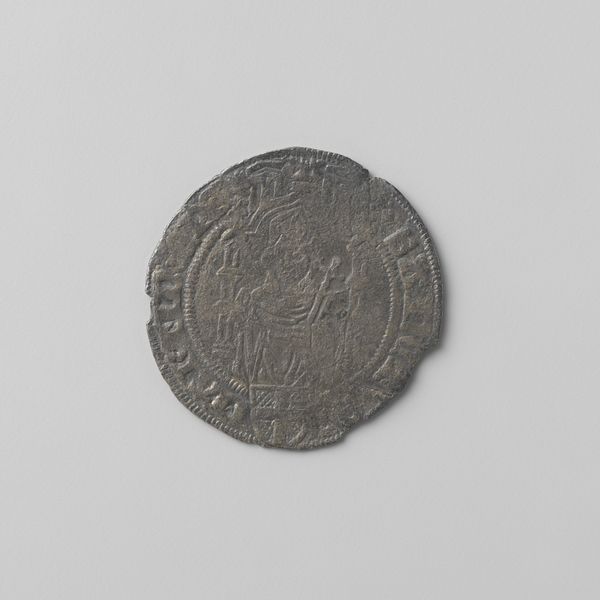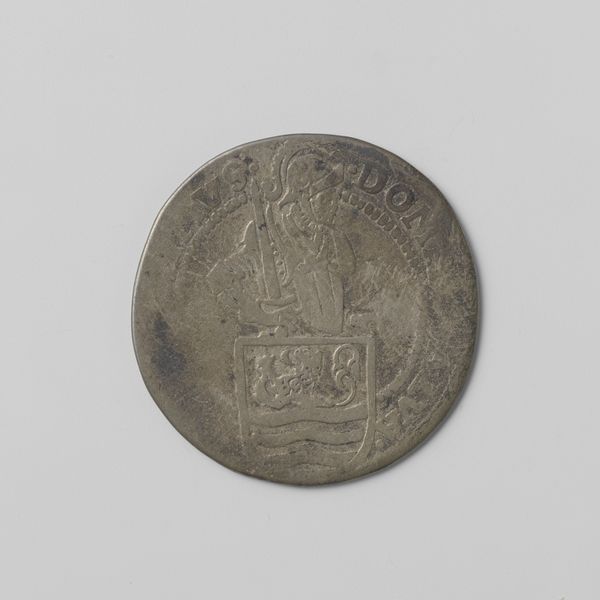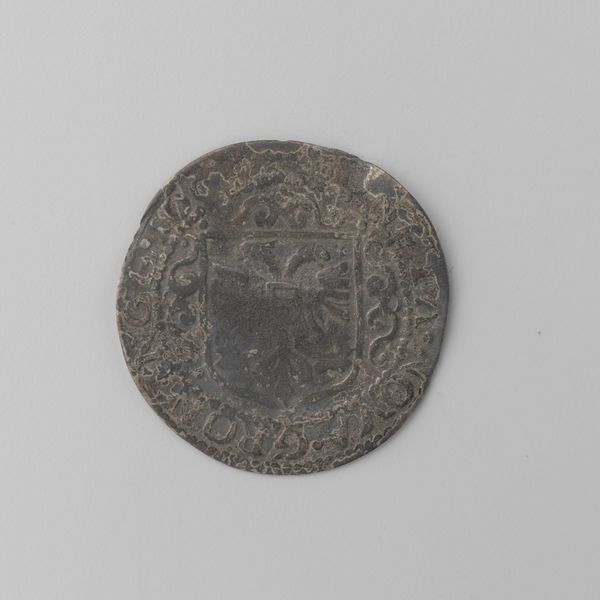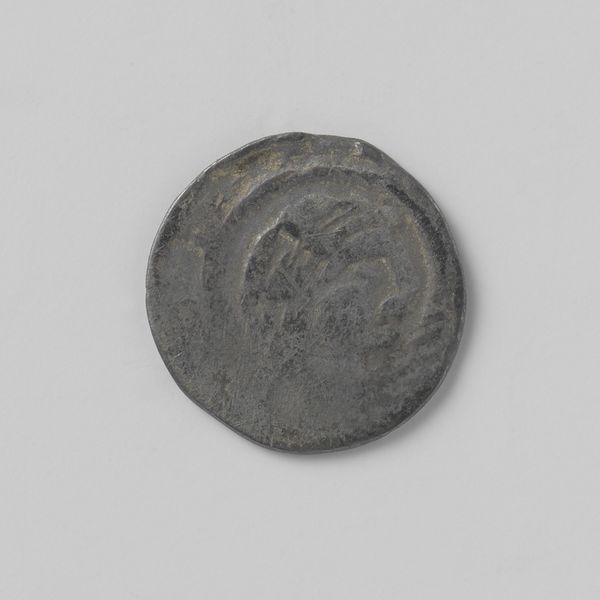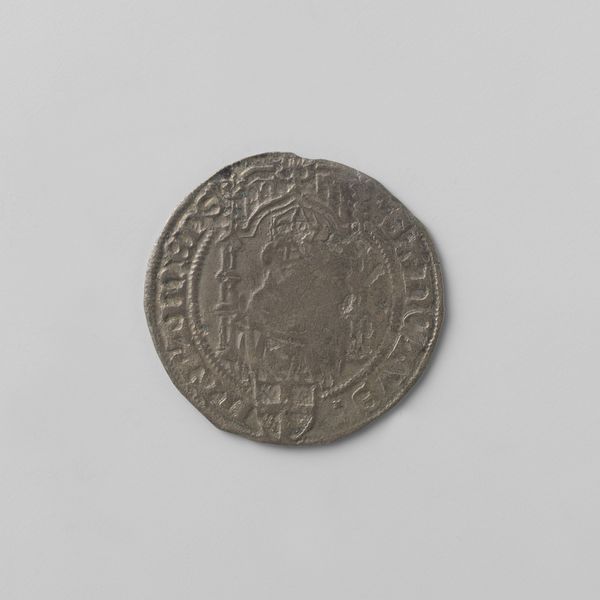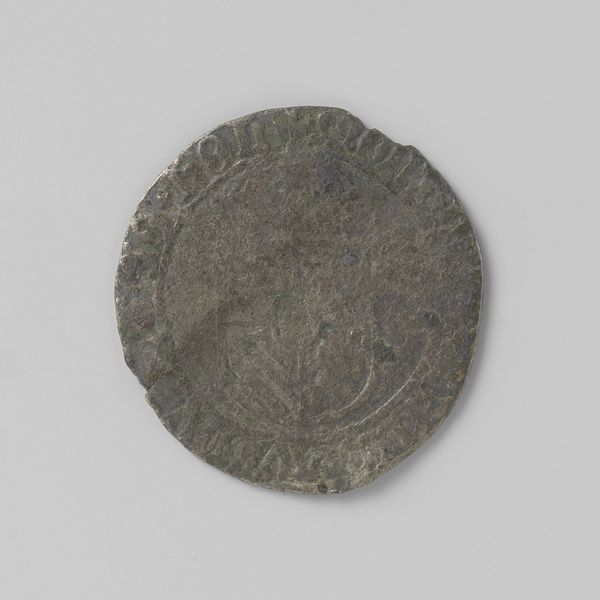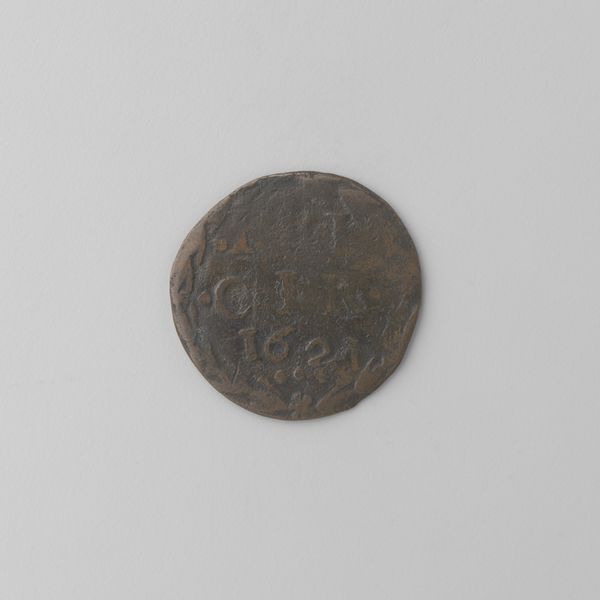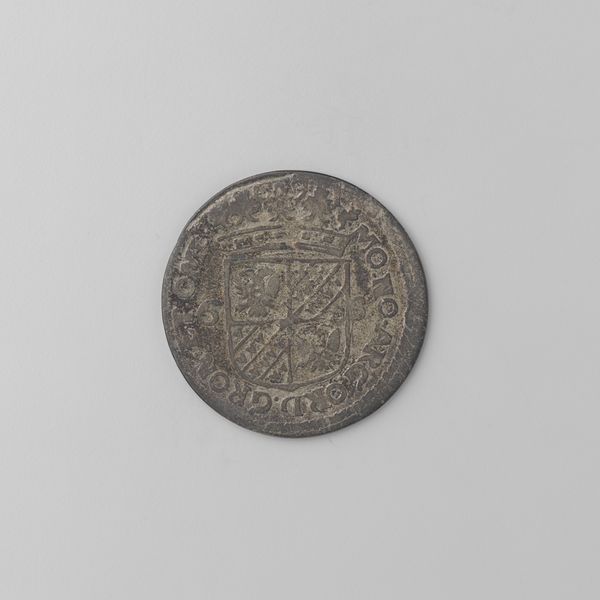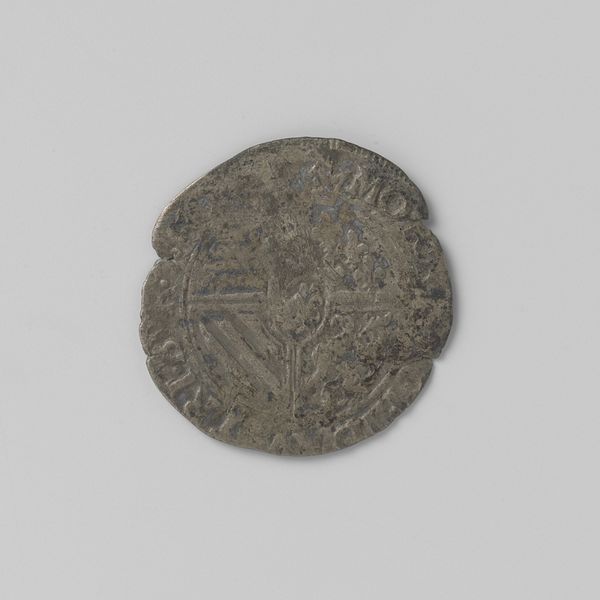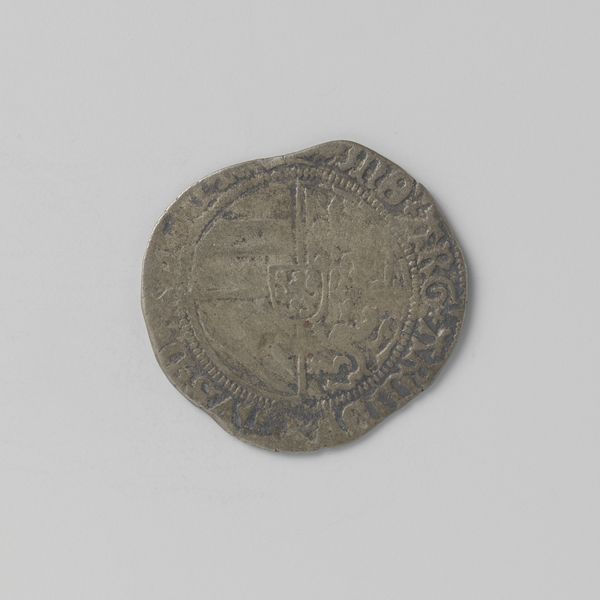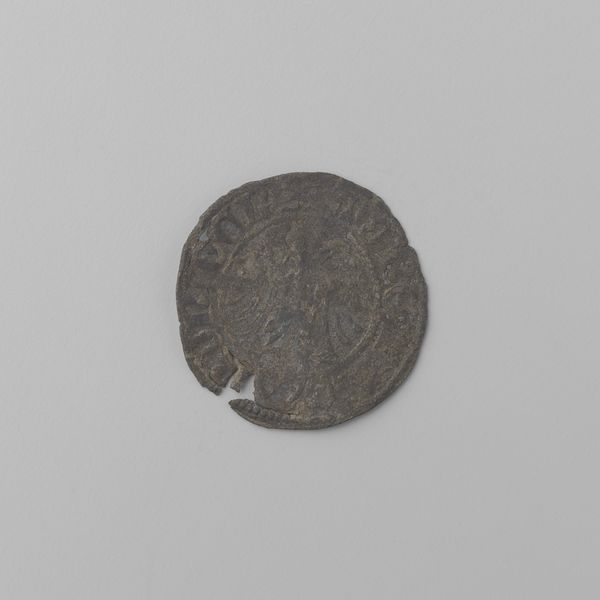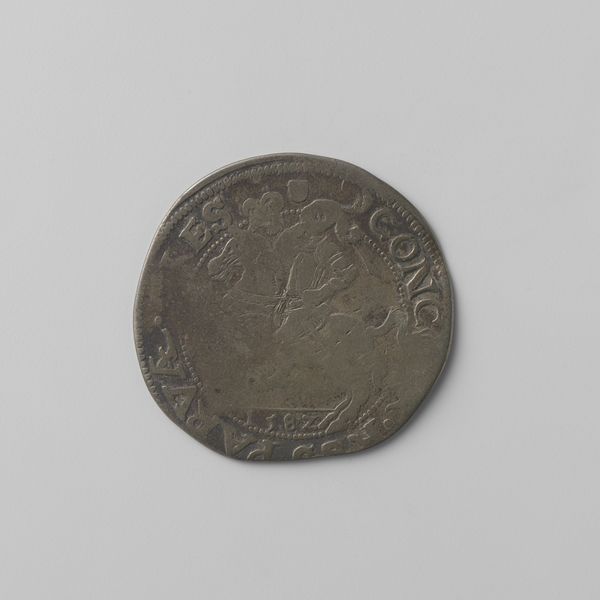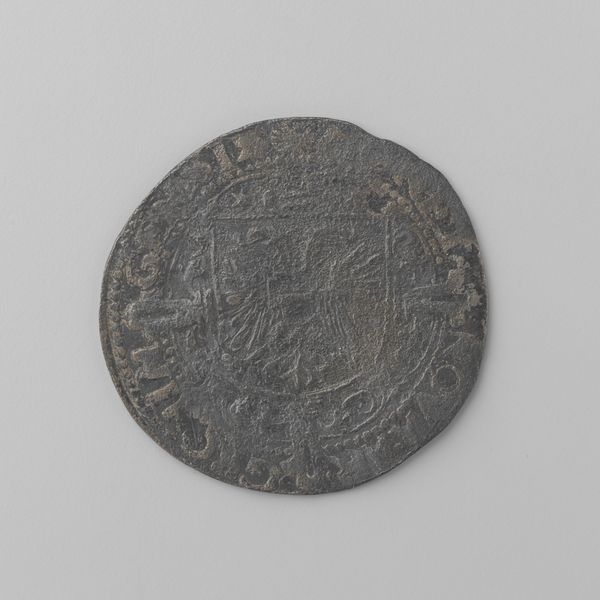
#
ancient-mediterranean
#
miniature
Dimensions: diameter 2.5 cm, weight 1.38 gr
Copyright: Rijks Museum: Open Domain
Editor: We're looking at a coin: "Hollandse groot van Jan van Beieren," dating back to 1421-1422. It's such a small piece, yet it speaks volumes. It feels almost like a little window into another time. What jumps out at you when you see it? Curator: Ah, a tangible piece of history, worn smooth by time, by hands… you almost want to hold it, don't you? For me, it’s a humble poem about power. This isn't just currency, it’s propaganda. Consider how Jan van Beieren wanted to be seen. What symbols did he choose? How does the inscription position him? What stories did he want his people, his rivals, even, to tell about him? Editor: So, it's more than just something to spend. It's a statement. Curator: Precisely! Every groove, every slightly smudged letter tells of an ambition. In the grand theatre of the early 15th century, coinage was one of the most effective stages to convey personal political stories to all viewers in the Low Countries and beyond. Now, I’m curious, what kind of personality do you attribute to Jan, just based on this piece? Editor: I think the choice to use Latin, shows he's attempting to connect himself with the authority of the Roman Empire... I guess that tells me he wants to be taken seriously. Curator: Absolutely! Each element is painstakingly considered, weighed. But now think, after years, maybe centuries, buried, found, polished… Does the meaning change for you now? Does that Latin declaration still hold the same weight? Editor: Wow, I hadn’t thought of it that way. It makes me realize how many layers are packed into such a small thing! Curator: Exactly! Art whispering to us across time, just waiting for us to listen closely!
Comments
No comments
Be the first to comment and join the conversation on the ultimate creative platform.
